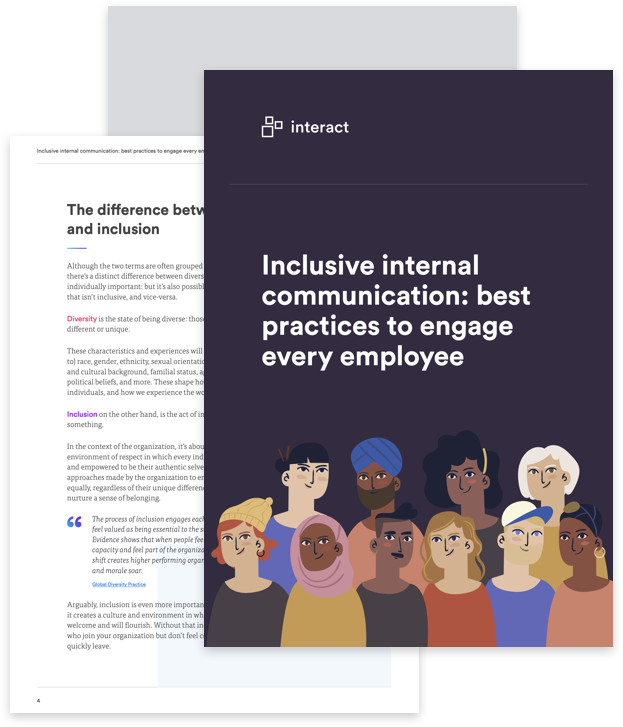Globalization in the workplace has made clear and effective communication more critical than ever. As employees from around the world come together to work, the language gaps in your workforce broaden.
The modern workforce is a mix of individuals hailing from different countries, religious principles, political beliefs, and cultural backgrounds. More often than not, you can expect some of these diverse individuals to speak very different languages.
With over 120 million (increasing by 2.3 million every year), multicultural consumers are the fastest growing segment of the United States population. Nielsen calls multicultural populations “the growth engine of the future in the United States.”
The world’s population is already incredibly multicultural, and this fact is wholly apparent in the workplace. More than 40 million people living in America were born elsewhere. However, about half of all immigrants ages 5 and older have limited English proficiency, according to a recent Pew Research Center report. Even more, these numbers do not speak for the many employees staffed by organizations that expand their businesses across the globe.
Free ebook – Inclusive internal communication
With location and time zones already a significant hindrance on communication between dispersed workforces, unaddressed language barriers only act as an additional hurdle.
Language gap challenges
Although globalization has opened up new encounters, new relationships, and new business opportunities, miscommunication among staff is bound to happen. According to a survey by Rosetta Stone, 90 percent of organizations struggle with language barriers in their day-to-day work.

Misunderstandings in language, culture, or translations can potentially lead to damaging consequences in colleague relations as well as employee-customer interactions. Cultural understanding and acceptance in the workplace have gained importance in the last few decades. Establishing the most effective relationship between an organization and its multi-lingual staff means acknowledging the challenges born from this language gap:
- Every industry presents its fair share of safety challenges and warnings. When employees are unable to understand hazards or share warnings with others, the danger increases. An estimated 25 percent of job site accidents are attributable to the language barrier. (ehstoday)
- Employees often rely on one another to relay important information, share helpful advice, and distribute knowledge about a client, product, or service. A language gap prevents staff dispersed across global offices or on the frontlines from communicating efficiently.
- Procedures, practices, and role requirements are often presented in only a few languages. Misunderstandings in job expectancies can lead to a loss in productivity, lowered efficiency, and higher turnover rates.
- A diverse workforce without proper support leads to silos as staff with similar backgrounds isolate themselves.
- The customer experience suffers when misunderstandings based on language discrepancies occur. Frustrated customers quickly take their business elsewhere.
Free ebook – Inclusive internal communication
Considered as a lifeline for any successful company, communication is essential to establish an inclusive and diverse culture. Companies that recognize this notion must identify a path around these linguistic challenges and begin closing this language gap.
Language training and programs:
English is considered the top language of the business world, topping the list of languages learned in businesses internationally. However, the more diverse our workplaces become, the lower the chance that your entire workforce will be native English speakers.
Companies may admit that language learning is a necessity, but very few invest in language training or applications for their employees. It is time for language initiatives to expand and become a priority for companies, especially those expanding into international markets. Organizations must be able to communicate across the cultural divide since the risk of intercultural miscommunications is heightened.
Offering language training not only increases staff productivity in their roles; it also has considerable impact on people’s personal lives. Learning a language is deeper and more complex than learning proper grammar and vocabulary. People who study new languages often learn societal behaviors, cultural norms, idioms, and more before fully understanding a new culture.
Language programs are usually under the umbrella of workforce development programs. Yet, only a quarter of companies overall put language learning into individual development plans. To gain the most benefit to a diverse workforce, language learning needs to be flexible.

Being virtual, employees can learn from any location, receive support from fellow users, train alongside equally motivated colleagues, and best of all, track their accomplishments at the click of a button. With these new skills, employees gain the skills necessary to advance in their organization.
Employees who achieve the desired level of proficiency see an improved customer experience, and higher engagement at work.
Translation applications:
Language connects humans, creates a means for understanding and a way to build relationships. When workers cannot understand management, customers, or each other, they are operating at a social disadvantage.
Not all companies choose to invest in language training for these staff members. Some attempt other means of defeating the language gap. There are managers that rely on bilingual employees to translate the needs of those who have trouble communicating. Others chose to rely on translation services to share information with employees with limited language proficiencies.

As useful as interpreters are, it is not feasible to always have a professional or hired translator on hand. Translation applications such as Google Translate can be an effective and mobile supplement to language earning programs and bilingual staff. An intranet can also take out some work that comes with managing languages. Interact’s technology hosts a number of features that make the process easy:
- Product language can be assigned to members of a location or an individual user via their Profile. These language packs allow users to experience their homepages and communications in their native tongue.
- Language packs available today are English – UK, English – US, Spanish – Latin America, with 21 further language packs coming in the next two months and automatic product releases to ensure the functionality continues to evolve.
- A system text edit feature is available to access all product content and translate as needed. System text gives a better UX and a native experience with the software, ensuring they don’t face barriers trying to navigate around.
- Much like the translation button on apps such as IG or Facebook, on-demand translation increases communication and collaboration between teams. This machine-based translation will automatically detect non-language pack text and offer a ‘translate’ option for conversational, real-time translation; with built-in intelligence, it will learn as it goes, adjusting for in-house terminology for example. Users can read and understand the timelines of their international colleagues, building better connections.
When workers log on, they can read company policies, read pertinent homepages, and chat with colleagues in the language of their choice.
Encourage employees to close the language gap
Language is an inherent part of
Lack of time and motivation are some of the biggest challenges for employees attempting to improve their communication skills. Staff can be motivated by understanding the role of language abilities in advancing careers, encouraging promotions, and improving confidence.
Language gaps and cultural disparities in the workplace cannot be avoided. It is critical that companies prepare and give employees the necessary tools to overcome any obstacles.






